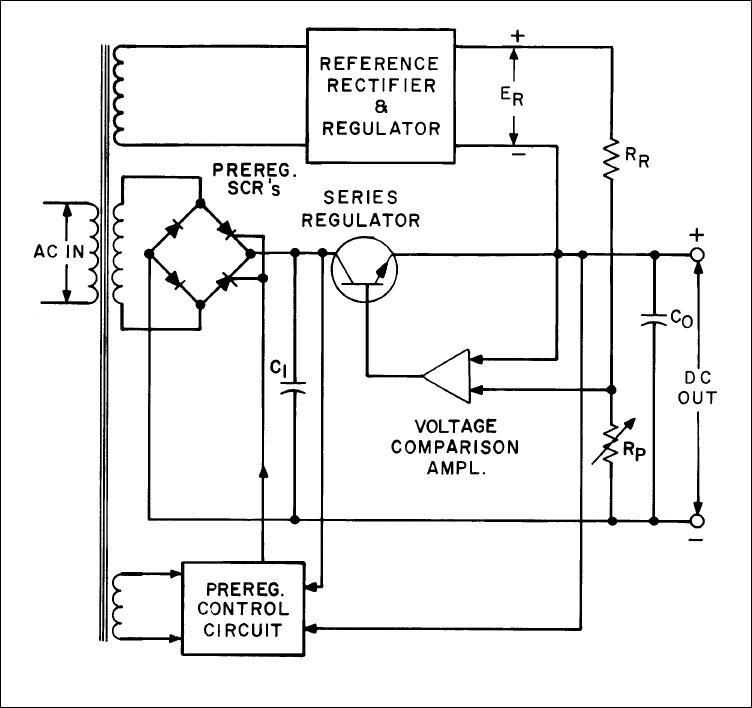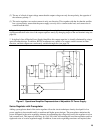
24
minimizing size increases.
Figure 7 shows an earlier Agilent power supply using SCR's as the preregulating elements. Silicon Controlled
Rectifiers, the semiconductor equivalent of thyratons, are rectifiers which remain in a non-conductive state,
even when forward voltage is provided from anode to cathode, until a positive trigger pulse is applied to a third
terminal (the gate). Then the SCR "fires", conducting current with a very low effective resistance; it remains
conducting after the trigger pulse has been removed until the forward anode voltage is removed or reversed. On
more recent preregulator designs, the SCR's are replaced by a single triac, which is a bidirectional device.
Whenever a gating pulse is received, the triac conducts current in a direction that is dependent on the polarity
of the voltage across it. Triacs are usually connected in series with one side of the input transformer primary,
while SCR's are included in two arms of the bridge rectifier as shown in Figure 7. No matter which type of
element is used, the basic operating principle of the preregulator circuit is the same. During each half cycle of
the input, the firing duration of the SCR's is controlled so that the bridge rectifier output varies in accordance
with the demands imposed by the dc output voltage and current of the supply.
Figure 7. Constant Voltage Power Supply with SCR Preregulator
The function of the preregulator control circuit is to compute the firing time of the SCR trigger pulse for each


















